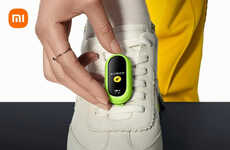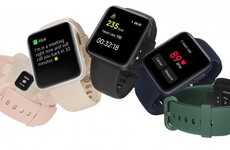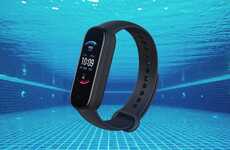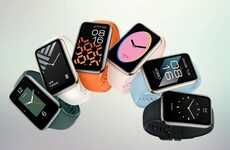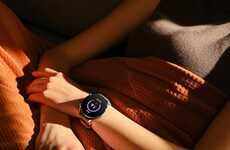
The Xiaomi Mi Band 2 Will Retail For Only $23 at Launch
Michael Hemsworth — June 2, 2016 — Lifestyle
References: mi & geeky-gadgets
The market for wearables had a slow start but the industry is showing signs of increasing at an accelerated rate with the announcement of new products like the Xiaomi Mi Band 2.
Featuring an OLED display and Bluetooth 2.0, the wearable is designed to track your fitness, steps and sleep patterns in a streamlined way. The wearable also features the ability to be set to remind you to get up and get active if you've been sedentary for too long.
The Xiaomi Mi Band 2 is purported to have a battery that will last the average user about 20 days on a single charge. The wearable features an IP67 rating when it comes to being resistant to dust and water, which makes it ready for the rough and tumble of daily life.
Featuring an OLED display and Bluetooth 2.0, the wearable is designed to track your fitness, steps and sleep patterns in a streamlined way. The wearable also features the ability to be set to remind you to get up and get active if you've been sedentary for too long.
The Xiaomi Mi Band 2 is purported to have a battery that will last the average user about 20 days on a single charge. The wearable features an IP67 rating when it comes to being resistant to dust and water, which makes it ready for the rough and tumble of daily life.
Trend Themes
1. Accelerated Wearables Market - The success of the Xiaomi Mi Band 2 highlights the growing interest in affordable wearables that seamlessly track fitness and lifestyle patterns.
2. Inexpensive OLED Displays - The use of OLED displays in affordable wearables is a trend with potential to disrupt market share of high-end wearable brands.
3. Long Battery Life for Wearables - A long-lasting battery life like the one on the Xiaomi Mi Band 2 is a feature that can set wearables apart in a crowded market.
Industry Implications
1. Fitness Technology - The wearable fitness technology industry can leverage trends toward affordable, long battery life wearables to encourage overall higher adoption rates.
2. Consumer Electronics - Incorporating OLED displays in consumer electronics is increasingly popular, and will continue to move down-market given the trend toward cheaper wearables that features these displays.
3. Healthcare Technology - Wearables tracking health metrics like heart rate, blood pressure, and more can be priced at more affordable levels, making healthcare technology more accessible for consumer, thanks to advancements seen with the Xiaomi Mi Band 2.
3.3
Score
Popularity
Activity
Freshness


